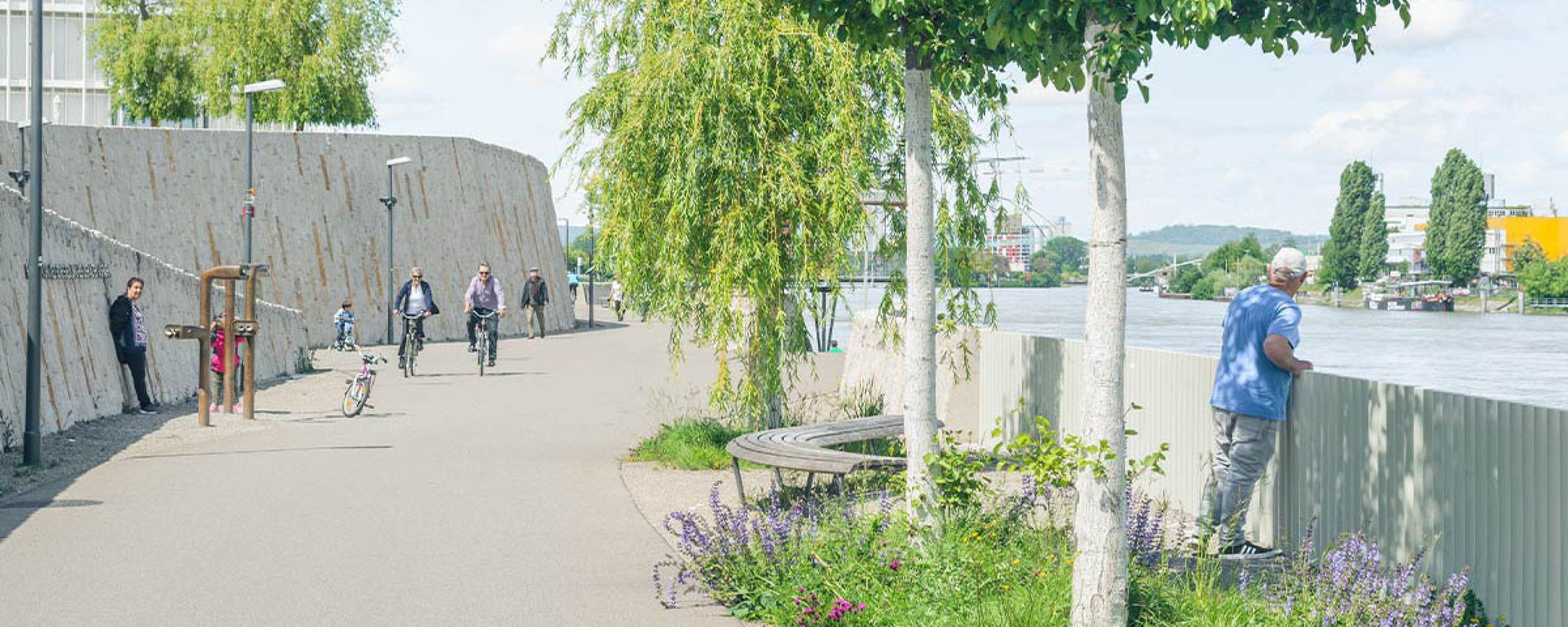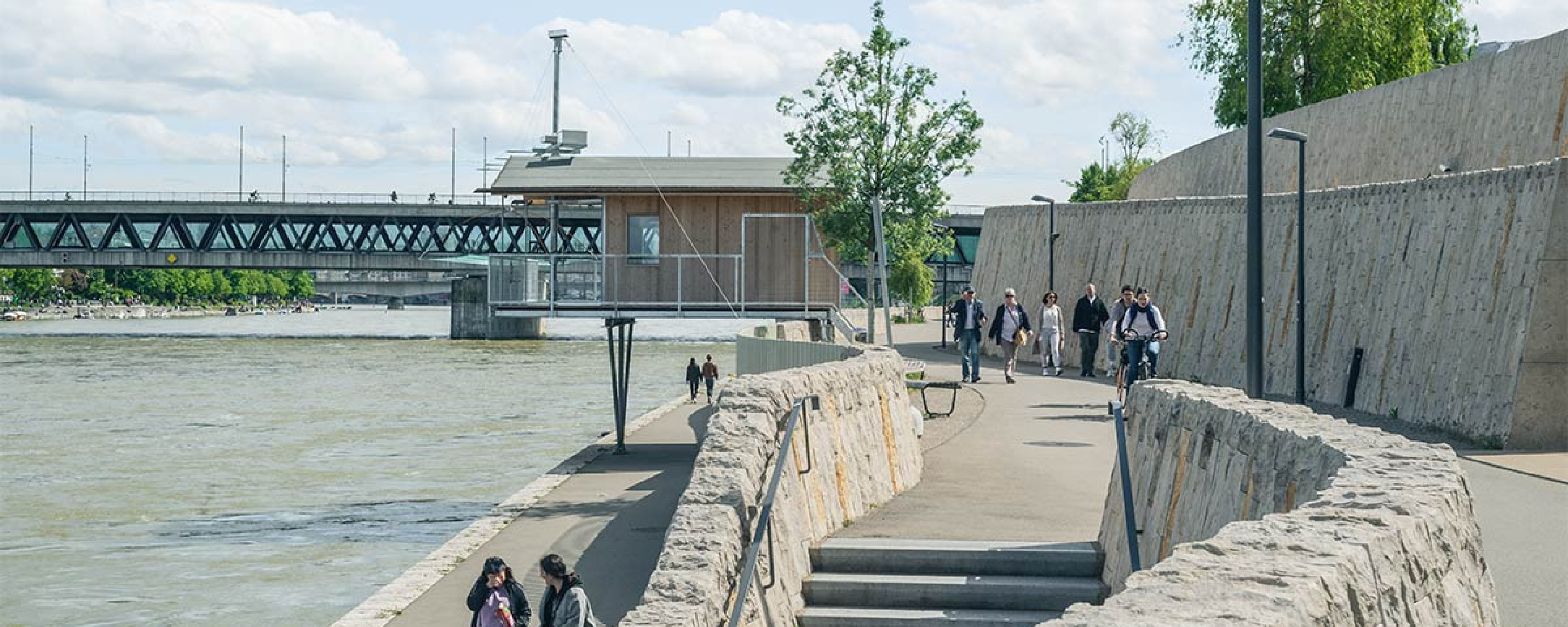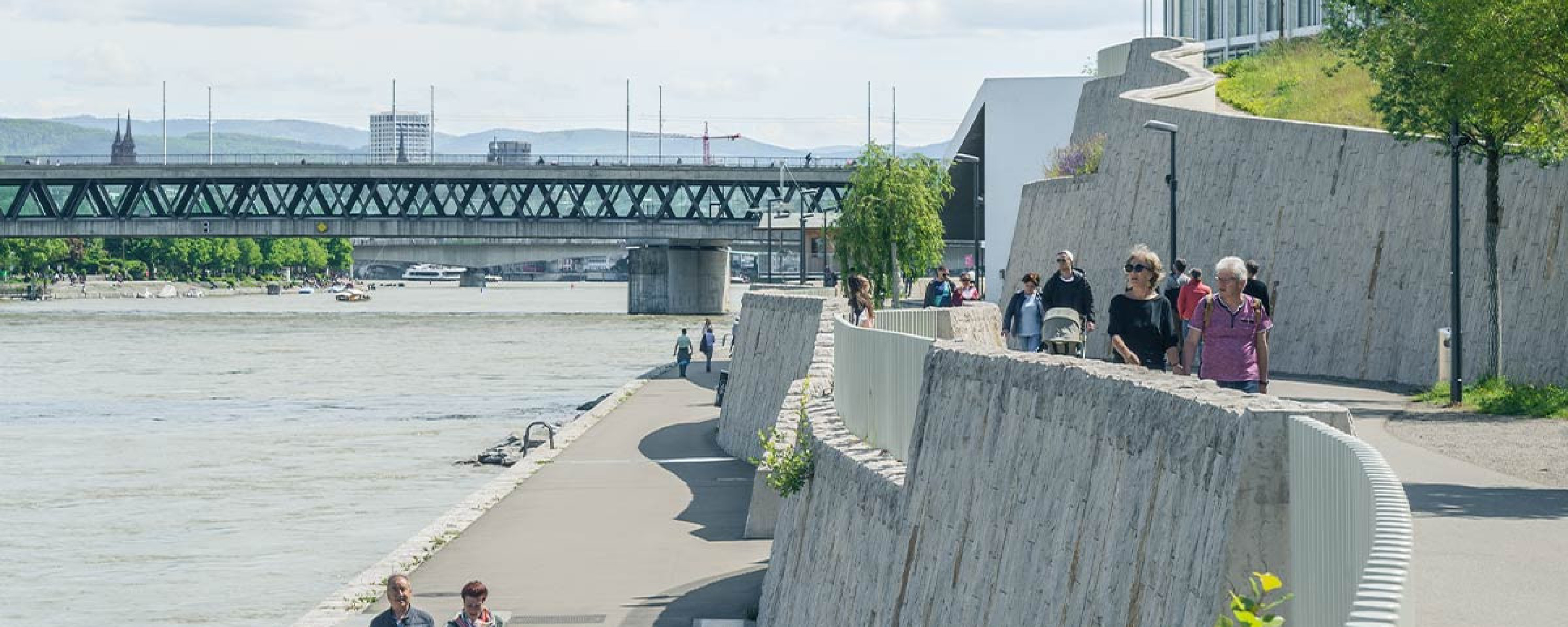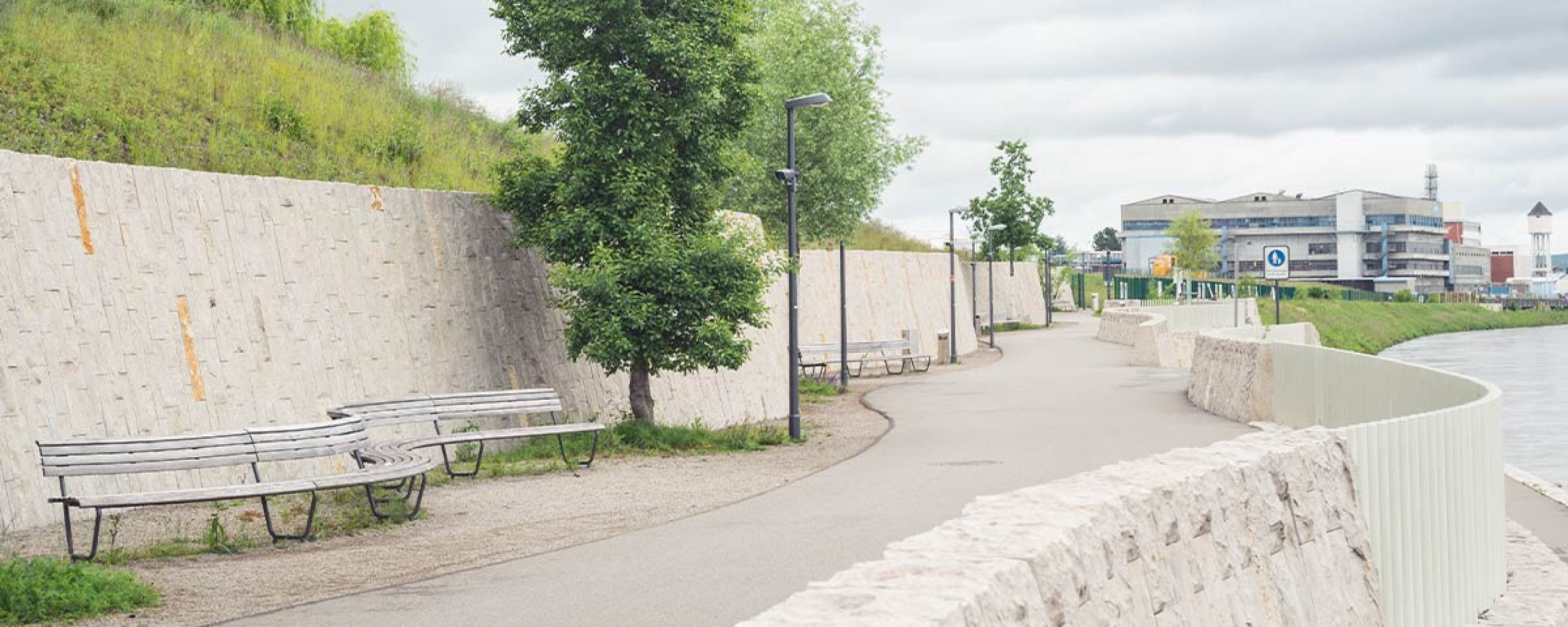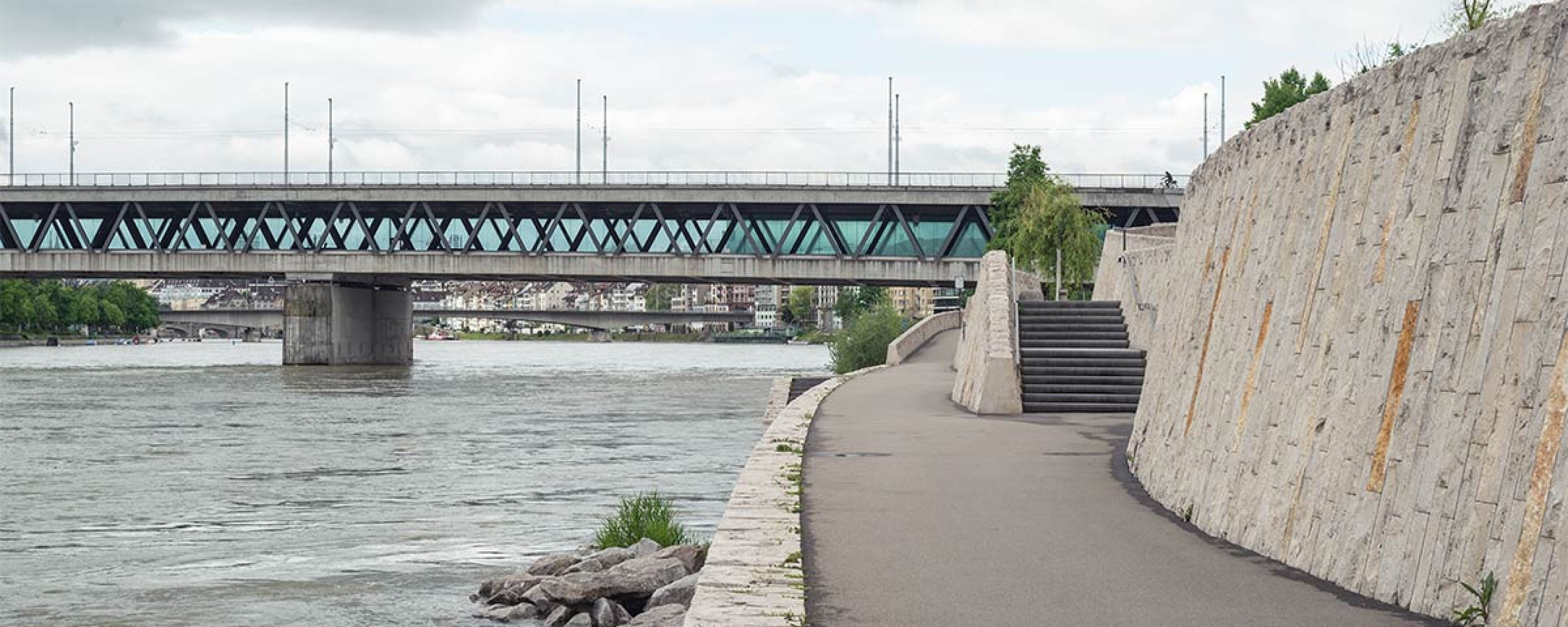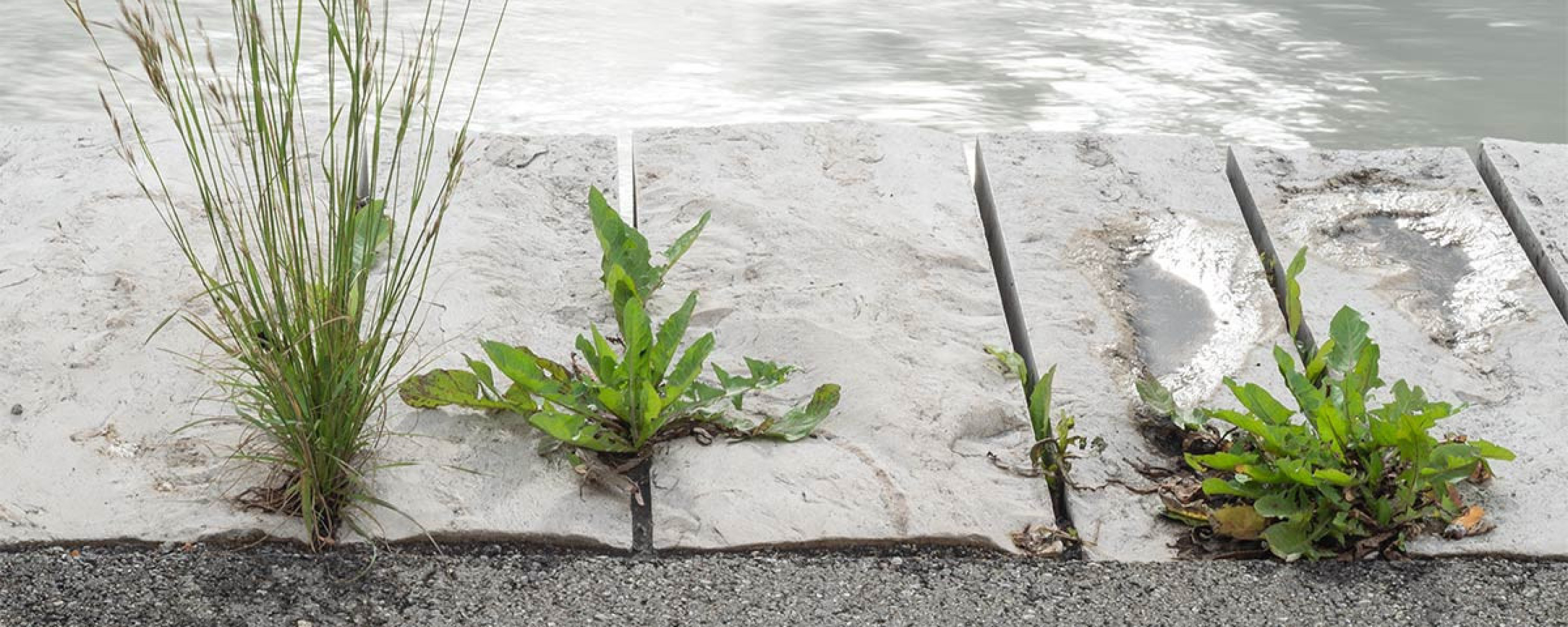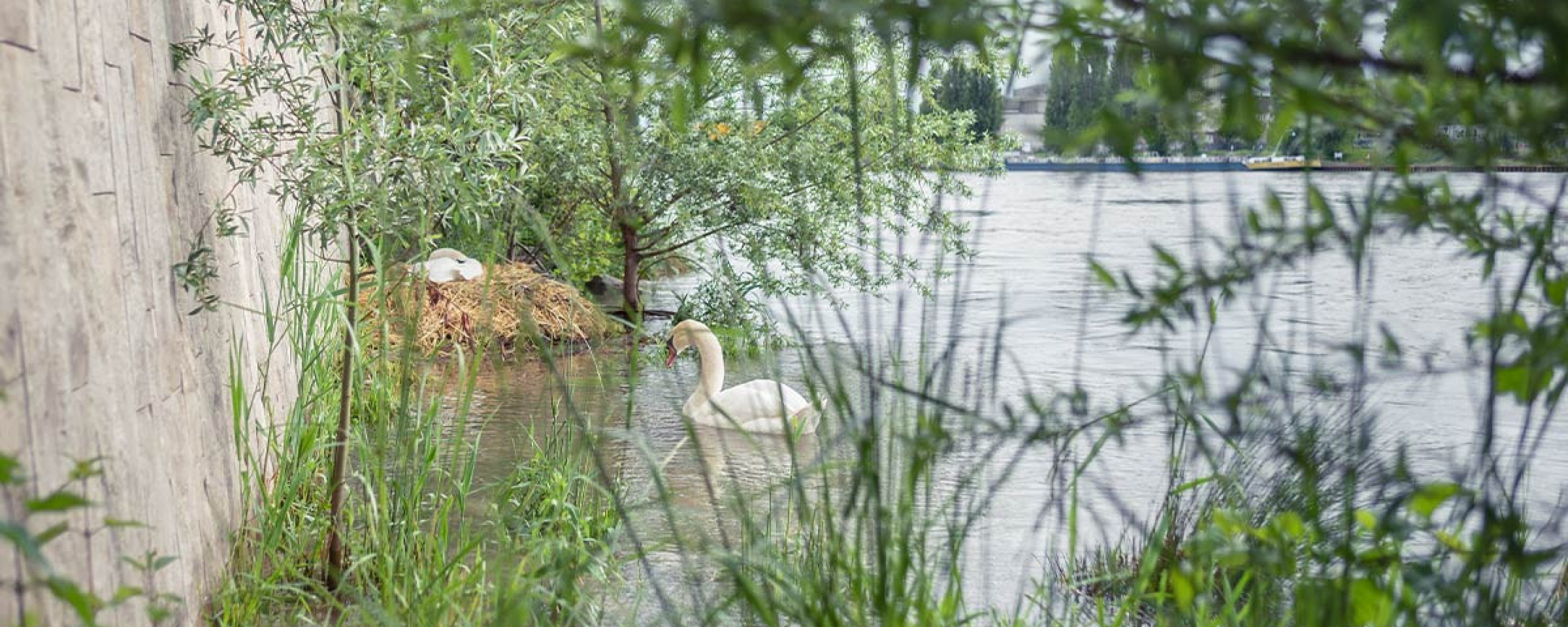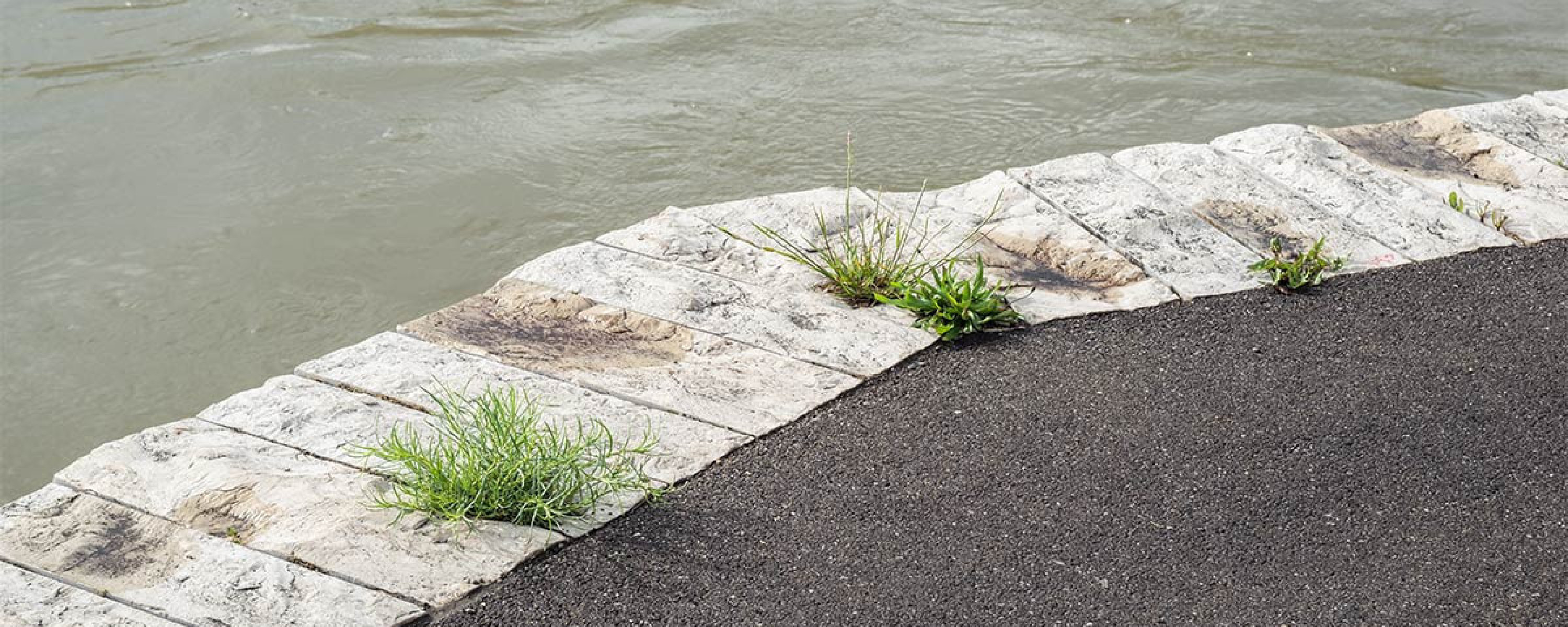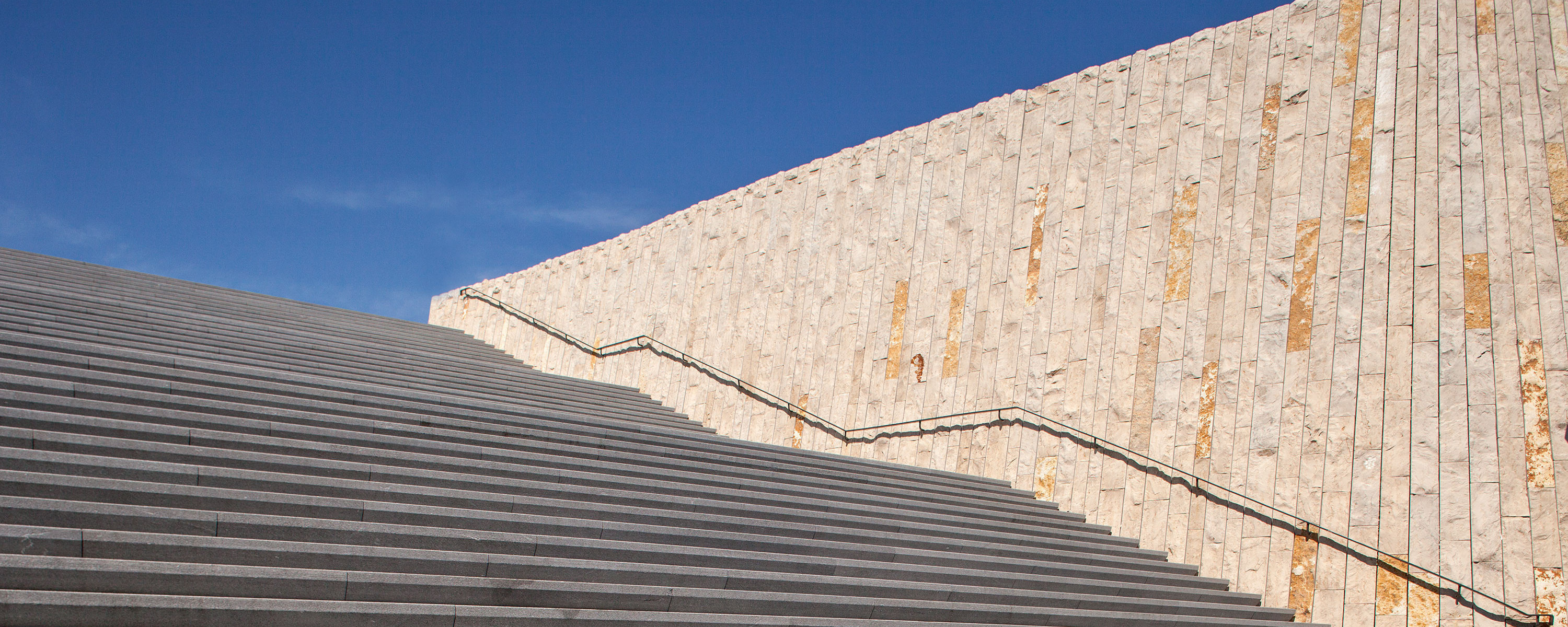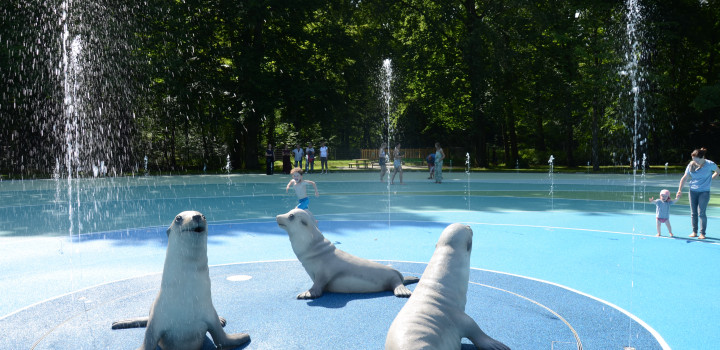A new promenade for pedestrians and cyclists has been created on the bank of the Rhine River between St. Johanns Park and the French border, where a closed port area was previously located. It is the result of nine years of planning and construction. The over 600-meter-long promenade between the Rhine and the Novartis campus is only ten to thirty meters wide, but overcomes a height of up to ten meters.
The design is oriented toward the patterns of the flow of the river, which find their continuation in the walls required to bridge the height differences. The walls take up the undulating movements and continue them further. The integrated stairs and ramps are interwoven with the walls in a nearly natural way and produce connections between the individual height levels. Vertically arranged bands of crushed limestone give the riverbank section a warm, textile expression.
The promenade is structured into two primary levels of paths. The level near the water forms the non-flood-safe berm path that is typical for Basel. Here, exits for swimmers in the Rhine and showers provide an attractive offer in the summer. The flood-safe, four-meter-wide promenade path has graveled, environmentally effective niches for spending time, with trees and benches for sitting. The drywalls, slab surfacing with silted joints, and macadamized surfaces facilitate an ecological retention of rainwater and provide habitats for plants and animals. The roaming activity of beavers, which are protected by federal law, was taken into account in the planning et al. with eco-platforms, which provide welcome refuge. Open joints, recesses, and options for overwintering were deliberately created for the protected species of lizards that live on the Rhine riverbank. The spontaneous growth with grasses, herbs, ferns, and mosses leads to a gradual colonization and patination of the site. The walls are thus gradually being transformed into small-scale hanging gardens.
Rhine River Promenade
Curved terraces overcome the striking difference in height between the Rhine River and the Novartis campus. The design vocabulary developed based on the flow of the river creates a special sort of riverbank promenade.
Client
- Kanton Basel-Stadt
- Novartis Pharma AG
Project Data
- Competition 2007, 1st Prize
- Planning 2008-2014
- Realisation 2014-2016
- Area 15`000 m²
- Award: Iconic Awards 2016
Project Team
- Staubli Kurath Partner AG, Zürich
Year
2007
Location
Basel
Publications
German Design Award (2017), Award
Iconic Awards (2016), Award
Rheinpromenade Basel: «Mit dem Rhein fliesst die Landschaft durch die Stadt.» (2011), Media
Korrektes Wasser (2008), Exhibition
Neue Rheinuferpromenade erhält hängende Gärten (2007), Media


